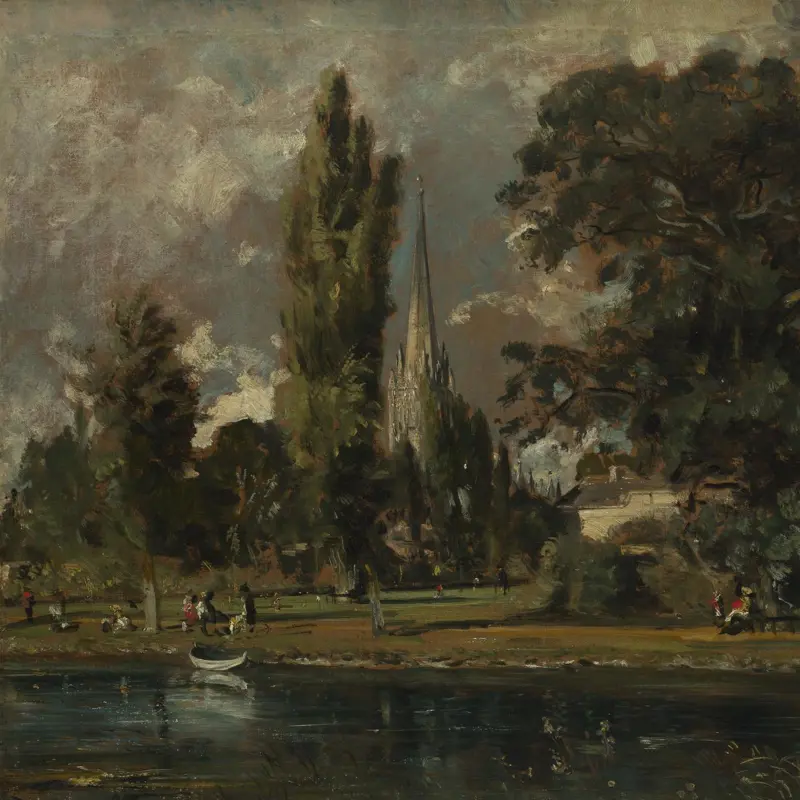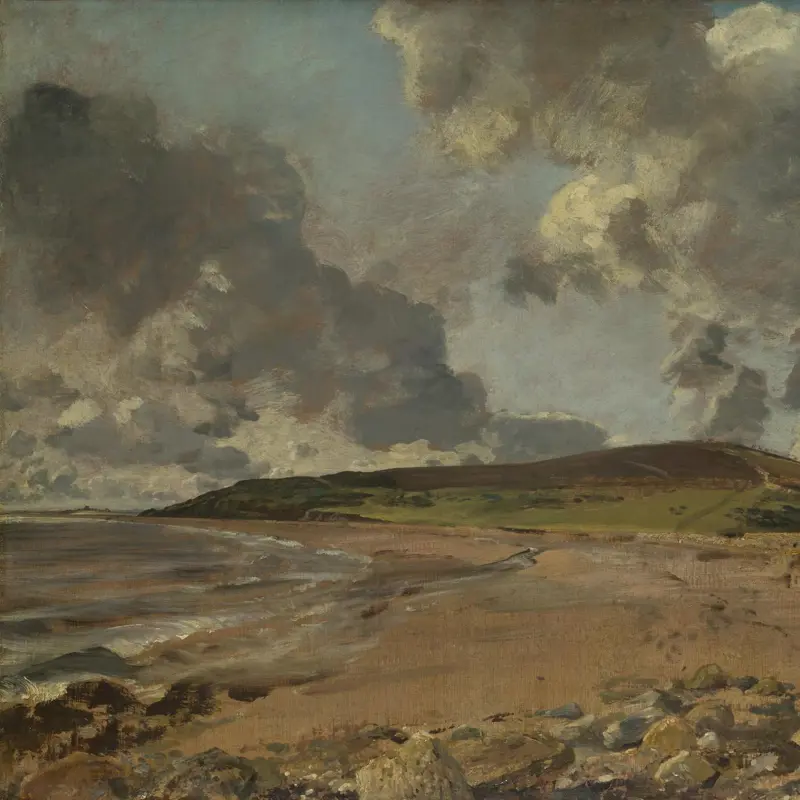John Constable, 'Cenotaph to the Memory of Sir Joshua Reynolds', 1833-6
About the work
Overview
This painting depicts a memorial to the painter Sir Joshua Reynolds, built by Sir George Beaumont in the grounds of his home at Coleorton Hall, Leicestershire, in 1812. Beaumont planned to redesign his gardens to include other memorials dedicated to his friends and the people he admired. The poet William Wordsworth spent about a month at Coleorton in the summer of 1810 composing inscriptions for the memorials.
When Constable visited Coleorton in 1823, he made a pencil drawing of the monument. Ten years later, he began to turn the pencil drawing into an oil painting, which he was to entitle Cenotaph to the Memory of Sir Joshua Reynolds. He returned to the canvas three years later, and finished it in time for the Royal Academy exhibition of 1836. It was the last painting that Constable exhibited at the Royal Academy and it did not sell.
Key facts
Details
- Full title
- Cenotaph to the Memory of Sir Joshua Reynolds, erected in the grounds of Coleorton Hall, Leicestershire by the late Sir George Beaumont, Bt.
- Artist
- John Constable
- Artist dates
- 1776 - 1837
- Date made
- 1833-6
- Medium and support
- Oil on canvas (unlined)
- Dimensions
- 132 × 108.5 cm
- Acquisition credit
- Bequeathed by Miss Isabel Constable as the gift of Maria Louisa, Isabel, and Lionel Bicknell Constable, 1888
- Inventory number
- NG1272
- Location
- Room 40
- Collection
- Main Collection
- Frame
- 19th-century English Frame (original frame)
Provenance
Additional information
Text extracted from the ‘Provenance’ section of the catalogue entry in Judy Egerton, ‘National Gallery Catalogues: The British Paintings’, London 2000; for further information, see the full catalogue entry.
Exhibition history
-
2016George Shaw: My Back to NatureAbbot Hall Art Gallery13 January 2017 - 11 March 2017
-
2020Masterpieces from the National Gallery, LondonThe National Museum of Western Art18 June 2020 - 18 October 2020The National Museum of Art3 November 2020 - 31 January 2021
-
2021Botticelli to Van Gogh: Masterpieces from the National Gallery, LondonNational Gallery of Australia5 March 2021 - 14 June 2021
-
2021Late ConstableRoyal Academy of Arts30 October 2021 - 13 February 2022
-
2024Discover Constable and The Hay WainThe National Gallery (London)17 October 2024 - 2 February 2025
Bibliography
-
1946Davies, Martin, National Gallery Catalogues: British School, London 1946
-
1946M. Davies, Paintings and Drawings on the Backs of National Gallery Pictures, London 1946
-
1975B. Taylor, Constable: Paintings, Watercolours and Drawings, 2nd edn, London 1975
-
1976L. Parris, I. Fleming-Williams and C. Shields, Constable: Paintings, Watercolours and Drawings, London 1976
-
1976L. Parris, I. Fleming-Williams and C. Shields, Constable: Paintings, Watercolours and Drawings (exh. cat. Tate Gallery, 18 February - 23 April 1976), London 1976
-
1982R. Paulson, Literary Landscape: Turner and Constable, New Haven 1982
-
1988F. Owen and D.B. Brown, Collector of Genius: A Life of Sir George Beaumont, New Haven 1988
-
1991J.C. Ivy, Constable and the Critics, 1802-1837, Woodbridge 1991
-
1998J. Egerton, The British School, London 1998
-
2000Egerton, Judy, National Gallery Catalogues: The British Paintings, revised edn, London 2000
-
2001
C. Baker and T. Henry, The National Gallery: Complete Illustrated Catalogue, London 2001
About this record
If you know more about this work or have spotted an error, please contact us. Please note that exhibition histories are listed from 2009 onwards. Bibliographies may not be complete; more comprehensive information is available in the National Gallery Library.







